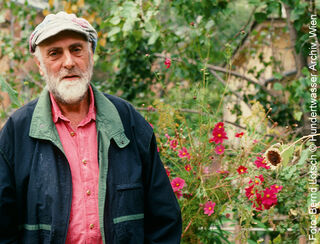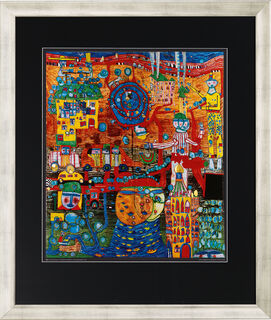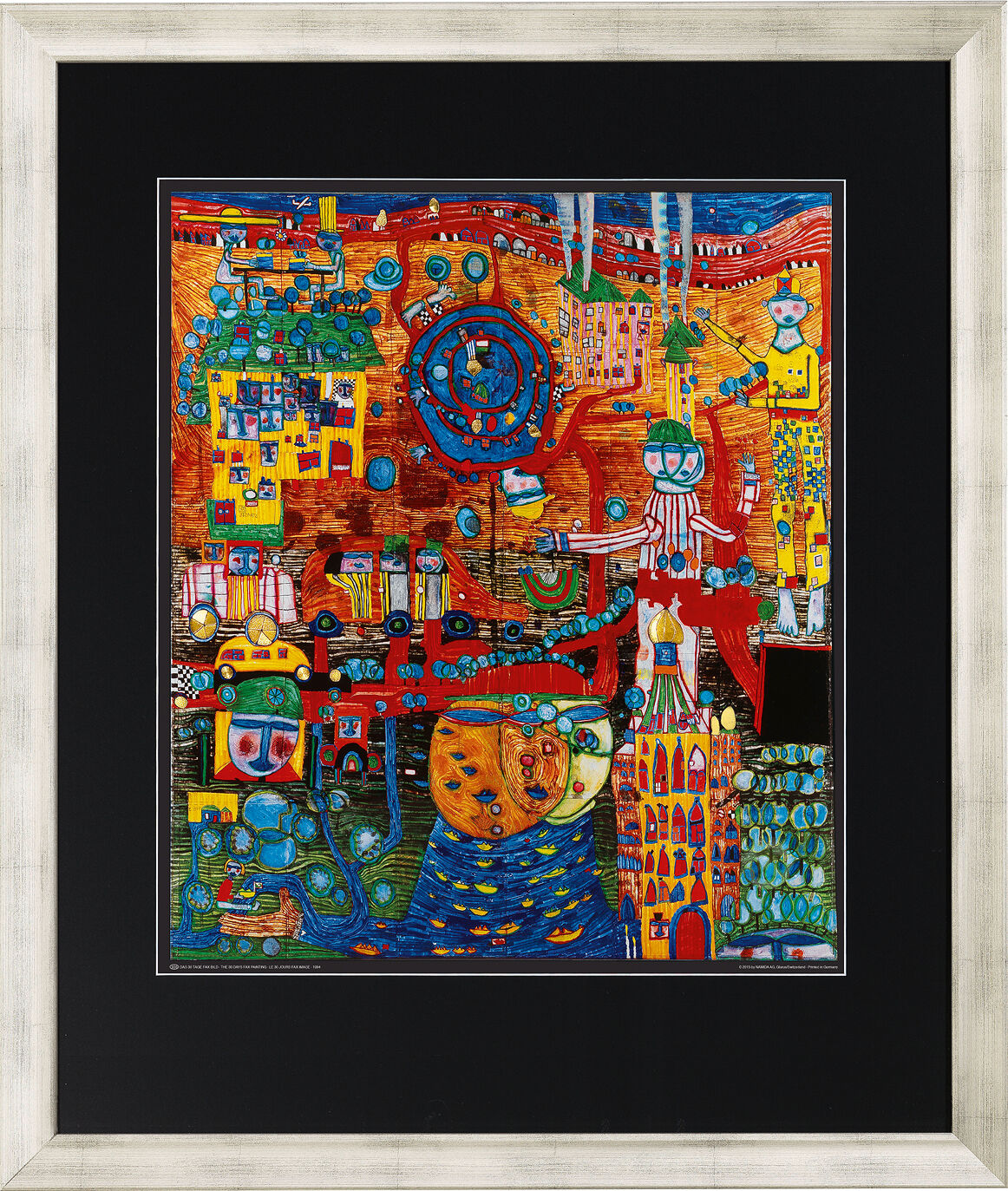Picture "(936) The 30 Day Fax", framed


Picture "(936) The 30 Day Fax", framed
Quick info
reproduction | foil stamping | framed | passe-partout | size 98.9 x 84.7 cm (h/w)
Detailed description
Picture "(936) The 30 Day Fax", framed
In January 1992, Hundertwasser sent A4 fax from the Antipodes/New Zealand to Vienna every day for thirty days. The artist then mounted copies of these thirty faxes on linen and painted them in mixed media. Hundertwasser saw this picture as a great painterly adventure: "The thematic material is decidedly of a fairy-tale nature, as if from a children's book. The dogmatic world of architecture refuses to concede that the architecture most fitting to man is to be found in children's drawings and fairy-tale books."
High-quality reproduction with foil stamping. The 30 Days Fax Picture. The 30 Days Fax Painting. Le 30 Jours Fax Image, 1994. © 2015 by NAMIDA AG, Glarus/Switzerland. Printed in Germany. Motif size 65 x 57 cm (h/w). Sheet size 84 x 59.4 cm (h/w). Framed in a silver-coloured solid wood frame with bevel cut passe-partout. Size 98.9 x 84.7 cm (h/w).

About Friedensreich Hundertwasser
1928-2000
Hundertwasser is one of the most internationally renowned artists of our time. His worldwide reputation was already established in the 1960s. Followed by an eventful and evocative career. His aura and power emerged from his painting and multifaceted work.
Organizing demonstrations, speeches, happenings and campaigns, addressing ecological issues, advocating a life in harmony with nature, manifestos for nature, standing up for a more humane architecture and the improvement of people's lives.
Hundertwasser originated projects such as the tree tenants, the roof afforestation, the regreening of cities, the humus toilet, the restoration of social values and the natural cycles. He was an admonisher against environmental pollution, against the dangers of nuclear energy, against natural degradation and the destruction of natural heritage, and in favour of a waste-free society.
Hundertwasser has been engaged with architecture since the 1950s. On the occasion of the inauguration of the Hundertwasser House of the City of Vienna (1986), he said: "We are again experiencing a turning point where old and rigid values in architecture and urban developement are increasingly being questioned. The straightness and uniformity of Bauhaus architecture is coming to an end because it is callous, sterile, cold, heartless, aggressive and emotionless. The era of absolute rationalism is coming to an end. The new values are enhanced quality of life, not standard of living. Longing for romance, individuality, creativity, especially creativity and living in harmony with nature."
With Friedensreich Hundertwasser, our epoch has found the most imposing challenger of totalitarian thinking, whether it concerns nuclear energy, genetic manipulation, environmental protection or the design of our living space. Hundertwasser lived completely in harmony with his view of things and opposing the contradictions of post-industrial society. Hundertwasser's significance is his art that produces beauty: a message of natural harmony, peace and joy.









